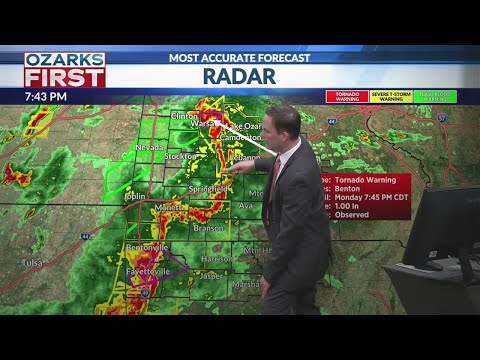Mastering Tornado Tracking: An In-Depth Exploration of Warnings and Outbreak Analysis
This article delves into the intricate world of tornado tracking, exploring its connections with severe weather warnings, outbreak analysis, and the ever-evolving technologies that aid in prediction and response. We will unravel the complexities of tornado tracking, understand its application across various sectors, and discuss its future trajectory, ensuring a comprehensive understanding of this critical field.
Understanding the Fundamentals of Tornado Tracking
Tornado tracking is a multifaceted field that requires a structured approach, starting with meticulous data gathering and progressing through rigorous analysis and strategic planning. It’s a process involving not just technology but also critical thinking and interdisciplinary collaboration. Materials like “Tornado Warning Expiries in Missouri and Arkansas Counties” emphasize the real-world applications and practical significance of understanding and implementing effective tornado tracking strategies.
The Importance of Continuous Evolution and Adaptation
The paramount takeaway regarding tornado tracking is the critical nature of continuous evolution and adaptation. This ongoing importance highlights the need for lifelong learning and staying abreast of the latest advancements. Content related to “LIVE | Tracking Severe Storms & Tornado Warnings” reinforces this idea, emphasizing the dynamic nature of the field.
Debunking Common Misconceptions
Many individuals underestimate the depth and complexity of tornado tracking. A thorough analysis unveils a more intricate reality than what casual observers might perceive. Discussions surrounding “🔴 Tornado Outbreak Happening NOW! Detailed Radar Tracking and Expert Analysis” emphasize this point, revealing the often underestimated nuances of the field.
[IMAGE: https://i.ytimg.com/vi/7N41gldHBjY/hqdefault.jpg Alt Text: Radar image showing potential tornado outbreak.]
The Interplay Between Tornado Tracking and Related Fields
The relationship between tornado tracking and related fields such as weather forecasting and emergency management is synergistic and interdependent. Advances in one area can directly catalyze innovation and development in others, creating a positive feedback loop. For instance, progress in tracking technologies can unlock new potentials for more effective warning systems and response strategies.
The Role of Arkansas in Tornado Tracking
While seemingly distinct, tornado tracking and the specific geographical context of areas like Arkansas have an interdependent connection. Case studies and illustrative examples, such as projects focusing on enhancing Arkansas’ capabilities in tornado tracking, can be incredibly instructive. Examining the outcomes, hurdles, and lessons learned from such applications offers valuable takeaways for similar endeavors. Content like “Tornado Warning Expiries in Missouri and Arkansas Counties” provides a concrete example of this.
Integrating AI and Machine Learning
Looking towards the future, it’s plausible that tornado tracking will evolve by incorporating elements of emerging technologies like AI and machine learning. This foresight is often a key discussion point in forward-looking content. Specifically, AI can assist in analyzing vast datasets to predict tornado paths and intensity with greater accuracy.
Tracking Tornado Outbreaks: A Detailed Analysis
Tornado outbreaks require meticulous tracking and analysis to mitigate potential damage and save lives. Detailed radar tracking, combined with expert analysis, as highlighted in “🔴 Tornado Outbreak Happening NOW! Detailed Radar Tracking and Expert Analysis”, is crucial during these events. Understanding the nuances introduced by severe weather conditions allows for more effective warnings and response strategies.
[IMAGE: https://i.ytimg.com/vi/ma-fXVv_7gE/hqdefault.jpg Alt Text: Live tracking of severe storms and tornado warnings.]
Ethical Considerations and Socio-Economic Shifts
Exploring the impact of tracking on tornado response involves discussions on ethical considerations and socio-economic shifts driven by its adoption. These interconnected ideas highlight the broader effects of technological advancements in this field. For example, access to advanced tracking technology can influence the effectiveness of warnings across different communities.
The Methodology Behind Effective Tracking
Effective tornado tracking involves a structured approach encompassing several key stages: comprehensive research, data gathering, rigorous analysis, strategic planning, and iterative implementation with continuous monitoring and feedback loops. Each step is critical for achieving successful and meaningful outcomes.
Frequently Asked Questions (FAQ)
Q: What is the most crucial element in effective tornado tracking?
A: The most crucial element is the critical nature of continuous evolution and adaptation, which emphasizes the ongoing importance of lifelong learning and interdisciplinary collaboration in this dynamic field.
Q: How does the geographical location, such as Arkansas, influence tornado tracking efforts?
A: Specific geographical contexts like Arkansas influence tracking efforts by requiring tailored strategies that consider local weather patterns, population density, and infrastructure. Studies and projects focusing on these areas provide valuable insights for similar endeavors.
Q: What role do emerging technologies like AI and machine learning play in the future of tornado tracking?
A: Emerging technologies like AI and machine learning are likely to play a significant role in the future of tornado tracking by enhancing predictive capabilities, improving data analysis, and enabling more efficient warning systems.
[IMAGE: A conceptual diagram illustrating the integration of AI and machine learning in tornado tracking. Alt Text: Diagram of AI and Machine Learning in Tornado Tracking]
Conclusion: Synthesizing Knowledge on Tornado Tracking
In conclusion, tornado tracking is a complex and dynamic field that demands continuous learning and adaptation. The ability to effectively track, analyze, and respond to tornadoes is crucial for mitigating risks and protecting communities. By understanding the interplay between tracking, warnings, and emerging technologies, we can enhance our preparedness and resilience in the face of severe weather events. The information synthesized from various sources highlights the importance of integrating theoretical knowledge with practical applications, ultimately contributing to more accurate predictions, timely warnings, and safer outcomes. This holistic approach, embracing both technological advancements and ethical considerations, defines the future of tornado tracking and its vital role in safeguarding lives and infrastructure.






